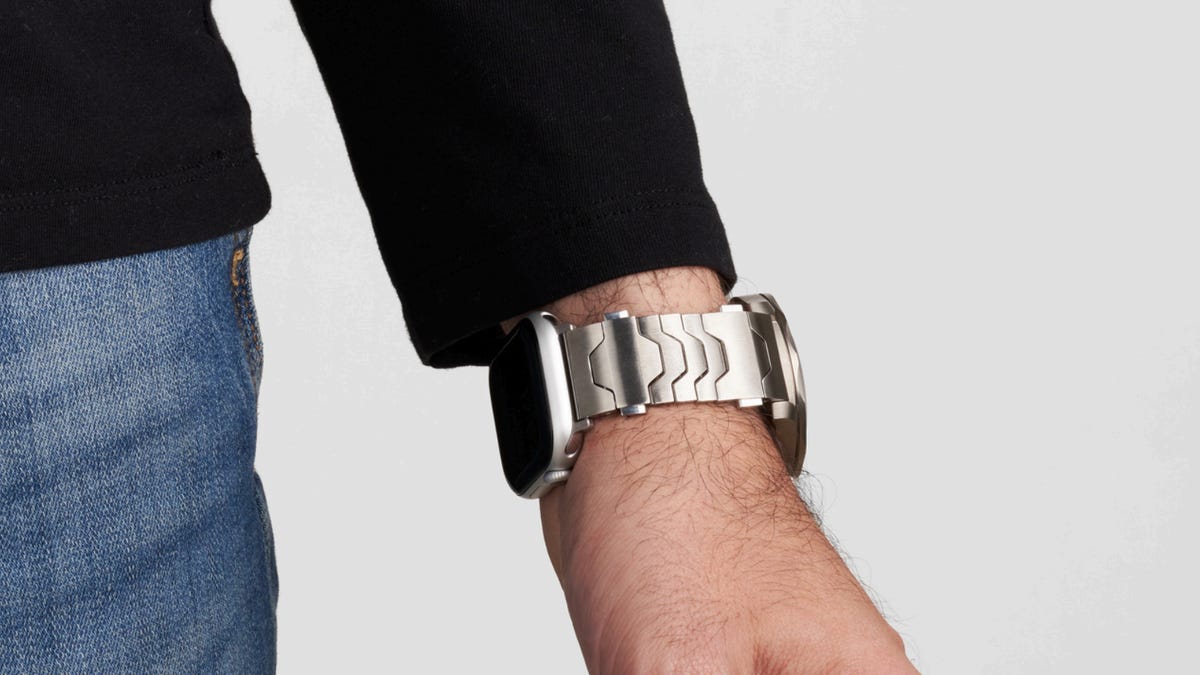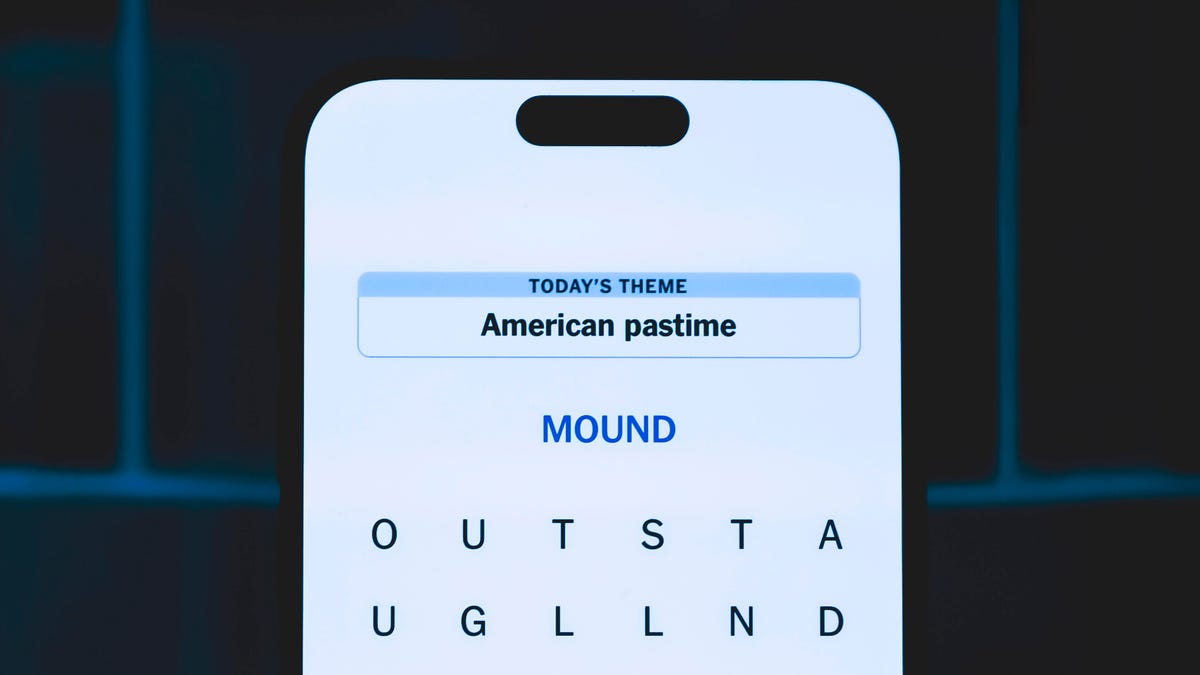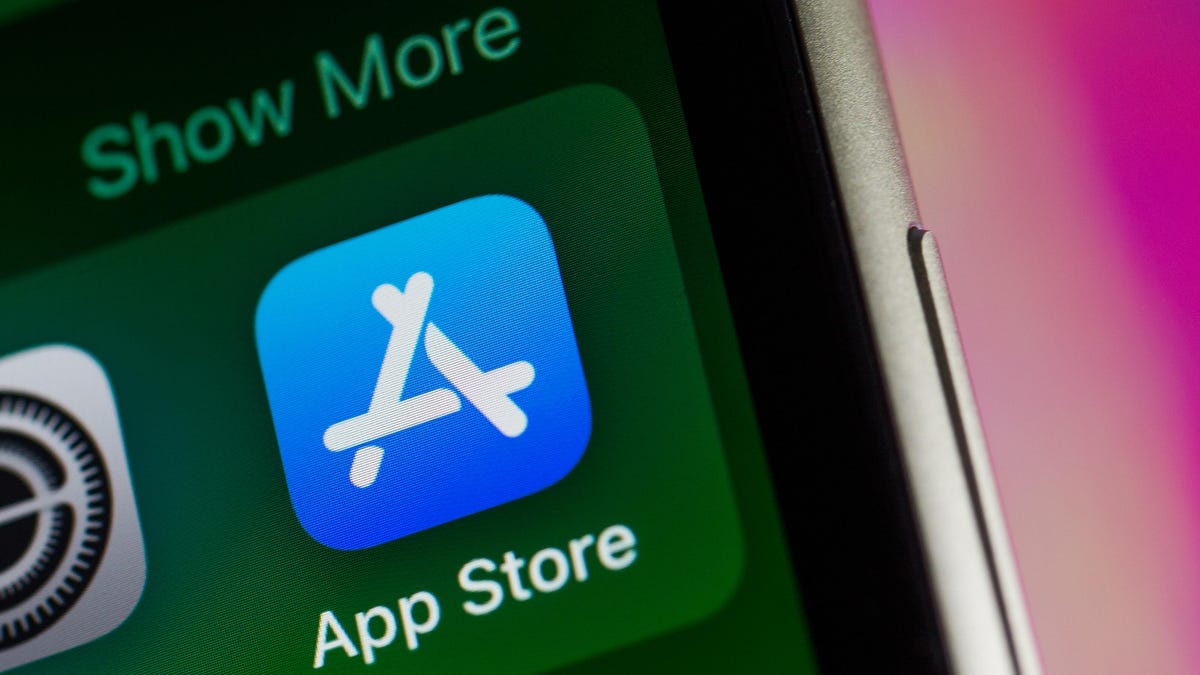Technologies
The Pixel 7A Raises the Bar for the Pixel 8
Commentary: The Pixel 7A proves that Google needs to do more to separate its main Pixel phone from its more budget-friendly option.
Advertiser Disclosure
We didn’t hear about the Pixel 8 at Google’s I/O conference, but the company did launch the Pixel 7A — a more wallet-friendly alternative to the Pixel 7. It’s great news for Pixel fans, since the 7A offers many of the same benefits as the Pixel 7 — such as a great camera and the new Tensor G2 processor — for $100 less. But it also makes me wonder whether Google’s A-series phones are beginning to overshadow its flagship Pixels.
Now that Google has narrowed the gap between the Pixel 7 and 7A, it should think more carefully about its target audience for the Pixel 8. If the Pixel 7A is for those who want a basic Pixel experience without compromising on performance and camera quality, and the Pixel 7 Pro is for photography enthusiasts, then who’s the Pixel 7 for? That’s the question I’m hoping Google answers with the Pixel 8, along with some other routine improvements to software support and battery life.
Google typically releases new Pixel phones in the fall, so we’re expecting to learn more about the Pixel 8 in a few months.
The Pixel 8 needs to stand out from Google’s next A-series phone
With the Pixel 8, Google needs to do more to make its upcoming mainline Pixel phone stand out. The $499 Pixel 7A already has many of the features most people are looking for in a new phone, such as a great camera, smooth performance, easy-to-use software and decent battery life.
The main differences between the Pixel 7 and 7A come down to the former’s slightly more durable design, larger screen and battery share. That latter feature lets you charge compatible accessories by resting them on the back of the phone, essentially turning it into a wireless charger. The Pixel 7 also has a larger camera sensor that’s more light sensitive according to Google, but I didn’t notice much of an improvement when comparing photos from both phones.
The Pixel 7 and Pixel 7A feel like they’re targeting the same audience: Android fans who want a general-purpose phone with a great camera and a reasonably sized screen. The Pixel 7 Pro stands out for its larger screen, extra telephoto camera and macro photography. It also comes in a 512GB storage option, unlike the Pixel 7, and has a screen with a higher, 120Hz refresh rate for even smoother scrolling. Case in point: There are plenty of factors that distinguish the Pixel 7 Pro from the Pixel 7, but not as many that differentiate the Pixel 7 from the 7A.
Moving forward, there are a few changes Google could make to fix that. Perhaps it could slightly increase the Pixel 8’s display size to 6.4 inches instead of 6.3 inches. That would put more distance between the Pixel 8’s screen and a future Pixel 8A, assuming Google keeps the same 6.1-inch display size for upcoming A-series phones.
Google could also give the Pixel 8 a speed boost when it comes to charging, since the Pixel 7 and Pixel 7A offer similar charging speeds (up to 18W on the Pixel 7A versus up to 21W on the Pixel 7). Increasing the charging speed to create more of a gulf between the Pixel 8 and the Pixel 8A could make the case for buying the Pixel 8 a little stronger. Increasing the base storage of the Pixel 8 to 256GB, much like Samsung has done with the Galaxy S23 Plus, along with offering an additional 512GB storage option could further distinguish the Pixel 8 from a future Pixel 8A.
These changes combined with the existing differences between the Pixel 7 and 7A could certainly make the Pixel 8 feel like a compelling choice over upcoming budget Pixel phones. Of course, this is assuming Google maintains its current strategy of releasing new flagship and Pro phones in the fall and a cheaper A-series phone in the spring or summer time frame.
Extended Android version support
Software is a big part of what makes Pixel phones so appealing, from the call assist features in the phone app to Google’s clutter-free version of Android. The problem, however, is that Google generally offers Android version updates for only three years following a Pixel phone’s release.
Though it does provide security support and other updates beyond that point, Google lags behind Samsung and Apple when it comes to operating system version support. Samsung typically offers up to four generations of Android platform updates on new phones, while Apple’s most recent software is compatible with iPhones as old as the iPhone X and iPhone 8 generation, which launched in 2017.
If Google could match Samsung’s four years, or surpass five years, that would make the Pixel line even more competitive.
Longer battery life
Battery life can never feel long enough, which is why I’m hoping to see some improvements in the Pixel 8. The Pixel 7’s battery life was long enough to get through a full work day and then some in my experience. But I’d want to pack a charger if I expected a particularly long day.
The Pixel 7A also performed better than the Pixel 7 in CNET’s three-hour battery test, during which I streamed a YouTube video at full brightness and tracked the battery percentage at each hour. It would be great to see Google make some improvements in this regard on the Pixel 8.
Pixel 7A vs. Pixel 7 battery test
| Pixel 7A | Pixel 7 | |
| 1 hour | 96% | 95% |
| 2 hours | 90% | 88% |
| 3 hours | 85% | 81% |
We won’t know what to expect from the Pixel 8 until Google announces its new phones, which will likely happen in the fall. The camera has been a focal point for Google’s Pixel series, so I’m expecting to see some advancements in that area, along with a new version of the Tensor processor in the Pixel 8. If Google makes those changes while offering longer battery life, additional Android support and more exclusive features that differentiate the Pixel 8 from its A-series phones, Google’s next $600 phone could be a hit.
Technologies
This Two-Faced Watch Band Lets You Hide an Apple Watch Under Your Rolex
The $418 Smartlet literally bridges the gap between your elegant analogy and your nerdy smartwatch.

The Consumer Electronics Show is never short on ambitious ideas, but Smartlet may be one of the more unusual ones this year: a modular watch strap that lets you wear a traditional mechanical watch and a smartwatch on the same wrist, simultaneously. One on top of the other.
The Paris-based startup announced Smartlet at the 2026 CES in Las Vegas, pitching it as a solution for people who love the look of an analog watch but also want the practicality of a smartwatch for notifications, fitness tracking and mobile payments. Instead of choosing between the two, Smartlet’s system lets you mount an old-school timepiece on the front of your wrist while hiding a smartwatch or fitness tracker on the underside.
The stainless steel strap starts at $418 and doesn’t include a smartwatch or a mechanical watch. What you’re really buying is the strap system, which is compatible with most major smartwatches and fitness trackers, including Apple Watch, Samsung Galaxy Watch, Google Pixel Watch, Garmin models, Fitbit Charge devices and Whoop. On the analog side, it supports watches with lug widths from 18 to 24 mm, which includes high-end models from brands such as Omega, Tudor, TAG Heuer and Rolex.
The idea comes from founder David Ohayon, who says he was tired of having to play favorites every morning, choosing between his analog and Apple Watch. Smartlet, in theory, offers the best of both worlds, letting you toggle from fitness nerd to polished executive with the flick of a wrist.
In practice, it raises some serious questions, the biggest one being bulk. Smartlet says the system adds between 9 and 12 mm of height to the underside of the wrist once a connected device is attached. As someone who already manages to scratch watches without trying, the idea of strapping a second device to the underside of my wrist, where it regularly comes in contact with desks, armrests and tabletops, sounds like a walking nightmare.
There’s also the aesthetic. Smartlet is clearly aimed at what it calls the «modern gentleman,» with marketing language that leans heavily into luxury watch culture and phrases like «from the boardroom to the weekend.» Translation: This is a watch for wealthy men who want to show off their investment piece without sacrificing their gym gain tracking.
And while it may not be the most practical, or budget-friendly solution for most people, Smartlet is one of those highly niche, standout products that had us doing a double take at this year’s CES.
Technologies
Today’s NYT Strands Hints, Answers and Help for Dec. 25 #662
Here are hints and answers for the NYT Strands puzzle for Dec. 25, No. 662.

Looking for the most recent Strands answer? Click here for our daily Strands hints, as well as our daily answers and hints for The New York Times Mini Crossword, Wordle, Connections and Connections: Sports Edition puzzles.
Today’s NYT Strands puzzle has a holiday theme, and if you know a certain Christmas carol, you’ll quickly determine which words to hunt down. Some of the answers are difficult to unscramble, so if you need hints and answers, read on.
I go into depth about the rules for Strands in this story.
If you’re looking for today’s Wordle, Connections and Mini Crossword answers, you can visit CNET’s NYT puzzle hints page.
Read more: NYT Connections Turns 1: These Are the 5 Toughest Puzzles So Far
Hint for today’s Strands puzzle
Today’s Strands theme is: Carolers count.
If that doesn’t help you, here’s a clue: Five golden rings.
Clue words to unlock in-game hints
Your goal is to find hidden words that fit the puzzle’s theme. If you’re stuck, find any words you can. Every time you find three words of four letters or more, Strands will reveal one of the theme words. These are the words I used to get those hints but any words of four or more letters that you find will work:
- RIMS, HIMS, MARS, CHIME, CHIMES, MADS, DATE, DIAL, WAIL
Answers for today’s Strands puzzle
These are the answers that tie into the theme. The goal of the puzzle is to find them all, including the spangram, a theme word that reaches from one side of the puzzle to the other. When you have all of them (I originally thought there were always eight but learned that the number can vary), every letter on the board will be used. Here are the nonspangram answers:
- LORDS, MAIDS, SWANS, LADIES, PIPERS, DRUMMERS
Today’s Strands spangram
Today’s Strands spangram is CHRISTMASDAYS. To find it, look for the C that’s three letters down on the far-left row, and wind across.
Don’t miss any of our unbiased tech content and lab-based reviews. Add CNET as a preferred Google source.
Toughest Strands puzzles
Here are some of the Strands topics I’ve found to be the toughest in recent weeks.
#1: Dated slang, Jan. 21. Maybe you didn’t even use this lingo when it was cool. Toughest word: PHAT.
#2: Thar she blows! Jan.15. I guess marine biologists might ace this one. Toughest word: BALEEN or RIGHT.
#3: Off the hook, Jan. 9. Similar to the Jan. 15 puzzle in that it helps to know a lot about sea creatures. Sorry, Charlie. Toughest word: BIGEYE or SKIPJACK.
Technologies
Judge Blocks Texas App Store Age-Check Law
A preliminary injunction found the Texas law, set to begin Jan. 1, is «more likely than not unconstitutional.»

A new Texas state law set to take effect on Jan. 1 would have required app stores to implement age verification processes. But the law has been put on hold, at least temporarily, by a federal court judge.
As reported by the Texas Tribune, Senate Bill 2420, also known as the Texas App Store Accountability Act, is the subject of a temporary injunction issued by US District Judge Robert Pitman.
Pitman said in his decision that the law as written is broad, vague and «more likely than not unconstitutional.» However, he also wrote the court «recognizes the importance of ongoing efforts to better safeguard children when they are on their devices.»
Don’t miss any of our unbiased tech content and lab-based reviews. Add CNET as a preferred Google source.
The Texas law, signed into law by Governor Greg Abbott in May, requires app store operators — including Apple, Google, Nintendo, Steam and more — to build age verification processes for the storefronts and to only allow downloads to minors who obtain parental consent. The injunction is a ruling in an October lawsuit filed by the Computer & Communication Industry Association.
CCIA senior vice president Stephanie Joyce said in a statement, «This Order stops the Texas App Store Accountability Act from taking effect in order to preserve the First Amendment rights of app stores, app developers, parents, and younger internet users. It also protects parents’ inviolate right to use their own judgment in safeguarding their children online using the myriad tools our members provide.»
Other individuals and the advocacy group Students Engaged in Advancing Texas also filed suits over the law, the Texas Tribune reported.
App Store Accountability Act
The bill author, State Senator Angela Paxton, said the bill was meant to give parents «common sense tools to protect their kids and to survive court challenges by those who may have lesser priorities.»
The language of Texas Senate Bill 2420 does not only include mobile app stores from Apple or Google, but any «website, software application, or other electronic service that distributes software applications from the owner or developer of a software application to the user of a mobile device.»
By that definition, websites with links to browser games or mobile game consoles with download options would fall under the Texas law as written. The law also defines mobile devices as including phones and tablets, as well as any other handheld device capable of transmitting or storing information wirelessly.
The parental consent aspect of the law requires those under 18 to have an app store account affiliated with a parent or guardian to purchase or download applications.
Age verification elsewhere
In an effort to keep adult materials out of reach of minors and to protect children from potentially harmful content and interactions, tech companies have been compelled by law or through legal action to verify the age of users.
Roblox, which has a huge audience of minors, began rolling out stricter age verification after investigations and lawsuits hurt its reputation as a safe gaming space. Australia is perhaps the most large-scale example of a government restricting access to online content. In December, Australia began restricting social media access to those 16 and older. Reddit recently challenged that law.
In the US, age verification laws have primarily targeted adult sites. Texas already has a law on the books that requires adult sites to age-block their content. The Supreme Court upheld that law in a June ruling. The UK has also enacted age restriction rules for adult sites as have other US states.
-

 Technologies3 года ago
Technologies3 года agoTech Companies Need to Be Held Accountable for Security, Experts Say
-

 Technologies3 года ago
Technologies3 года agoBest Handheld Game Console in 2023
-

 Technologies3 года ago
Technologies3 года agoTighten Up Your VR Game With the Best Head Straps for Quest 2
-

 Technologies4 года ago
Technologies4 года agoBlack Friday 2021: The best deals on TVs, headphones, kitchenware, and more
-

 Technologies4 года ago
Technologies4 года agoVerum, Wickr and Threema: next generation secured messengers
-

 Technologies4 года ago
Technologies4 года agoGoogle to require vaccinations as Silicon Valley rethinks return-to-office policies
-

 Technologies4 года ago
Technologies4 года agoOlivia Harlan Dekker for Verum Messenger
-

 Technologies4 года ago
Technologies4 года agoiPhone 13 event: How to watch Apple’s big announcement tomorrow
